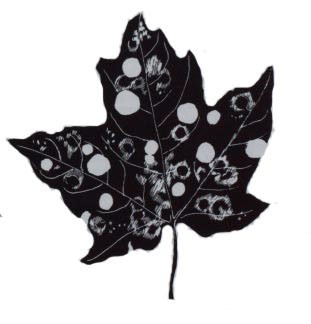In some areas of Vermont, landowners have been alarmed to see the leaves on their sugar maples looking scorched and colorless in late summer. Fortunately, the situation is not as bad as it appears, for the culprit, the maple leaf cutter, is a late season defoliator.
Though the tiny larvae hatch in June and get right to work eating maple leaves, they are so small at first that their damage doesn't amount to much. Meanwhile, the maple leaf is photosynthesizing away, repaying the tree for its investment, and sending some starch back to the bank. By the time the larvae have killed a significant amount of leaf surface, the leaves are slowing production and are soon to be "laid off." Of course, there is some loss to the tree — just not as much as you might think when you look up in late August and see more pale brown than green.
Maple leaf cutter larvae have an unusual way of feeding. When very small they are "miners," feeding on the soft tissue between the upper and lower leaf surfaces. Just as the larva is about to outgrow this space, it cuts two oval disks, one from the upper surface of the leaf and one from the lower. These are tied together with silk, making a little sandwich. The living sandwich filling then moves the sandwich to the upper surface of the leaf, and sticking its head out, feeds in a circular pattern, moving as needed to greener pastures. More ovals are added as the larva molts, leaving a distinctive pattern of brownedged holes or brown rings with green centers, if a new oval has not been cut.
The larvae, cases and all, crawl or drop to the ground when fully grown to pupate. The moths that emerge the following May have a wingspread of about a half an inch. The forewings are a steely blue, edged in black, and their heads are orange.
A significant outbreak of maple leaf cutter hit Vermont in the 1970s and numbers have again been on the rise in recent years. This is a minor pest to most people, but a major one for sugarmakers; even though trees are rarely killed outright, tree vigor and sap production are reduced, especially after repeated attacks. And the leaf peeper in all of us suffers, for it is an unsightly blotch on the fall palette.


